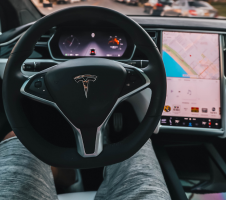
— A Tesla touchscreen recall is allegedly necessary for 2012-2018 Tesla Model S and 2016-2018 Tesla Model X vehicles for touchscreen failures that cause other safety-related failures.
The National Highway Traffic Safety Administration (NHTSA) opened an investigation into Tesla touchscreen failures in June 2020 after Model S owners complained about losing important safety features.
The cars are equipped with NVIDIA Tegra 3 processors and integrated 8GB eMMC NAND flash memory devices that allegedly fail and cause failures of the backup cameras, the heating and cooling controls, the Autopilot systems and driver assistance features.
NHTSA upgraded the investigation in November 2020 after finding Tesla touchscreen problems caused about 12,588 touchscreen incidents, including complaints, field reports, warranty claims and non-warranty claims related to touchscreen replacements.
And NHTSA learned which models were equipped with the affected touchscreens, so the upgraded investigation includes 159,000 model year 2012-2018 Tesla Model S and 2016-2018 Tesla Model X vehicles.
Tesla Touchscreen Recall Necessary For Safety: NHTSA
It's an unusual circumstance for NHTSA to tell an automaker to recall their vehicles but in a letter to the car company, safety regulators claim a Tesla touchscreen recall needs to be announced due to the safety risk of touchscreen failures.
The NVIDIA Tegra 3 processor with an integrated 8GB eMMC NAND flash memory device has a part of the 8GB storage capacity which is used each time the vehicle is started. But the cell hardware fails when the storage capacity is reached which will cause touchscreen failures.
Safety regulators are concerned about touchscreen failures that result in problems with the turn signals, chimes and alerts, the backup cameras and defrosting/defogging capabilities.
NHTSA's investigation determined the only way to repair the touchscreen failures is to replace the touchscreens. The flash devices have a finite lifespan based upon the number of program/erase cycles which eventually lead to worn out memory.
Safety regulators found it will take about 3,000 program/erase cycles, something that will likely occur within five to six years. That's much less than the normal lifespan of a vehicle.
"ODI [Office of Defects Investigation] believes that a 5- or 6-year life expectancy for a component integral to providing the driver with safety functions is insufficient. During our review of the data, Tesla provided confirmation that all units will inevitably fail given the memory device’s finite storage capacity." - NHTSA
According to the government, numerous safety recalls have been issued by other automakers in the past for the same type of problems associated with Tesla touchscreen failures. NHTSA also told Tesla a black touchscreen is too much of a hazard to ignore and federal law requires vehicle manufacturers to "conduct recalls to remedy safety-related defects."
Tesla has until January 27 to respond to NHTSA's letter, and if "Tesla decides not to conduct the requested recall, it must provide ODI with a full explanation of its decision, including any additional analysis of the problem beyond Tesla’s past presentations."
In place of ordering a touchscreen recall, Tesla initiated a touchscreen warranty program in 2020 but told customers the "condition has no impact on basic vehicle driving functionality and controllability."
The automaker was also sued by the owner of a 2015 Tesla Model S because of touchscreen failures which allegedly cost him nearly $2,300 to repair after Tesla said the work wasn't covered under warranty.




